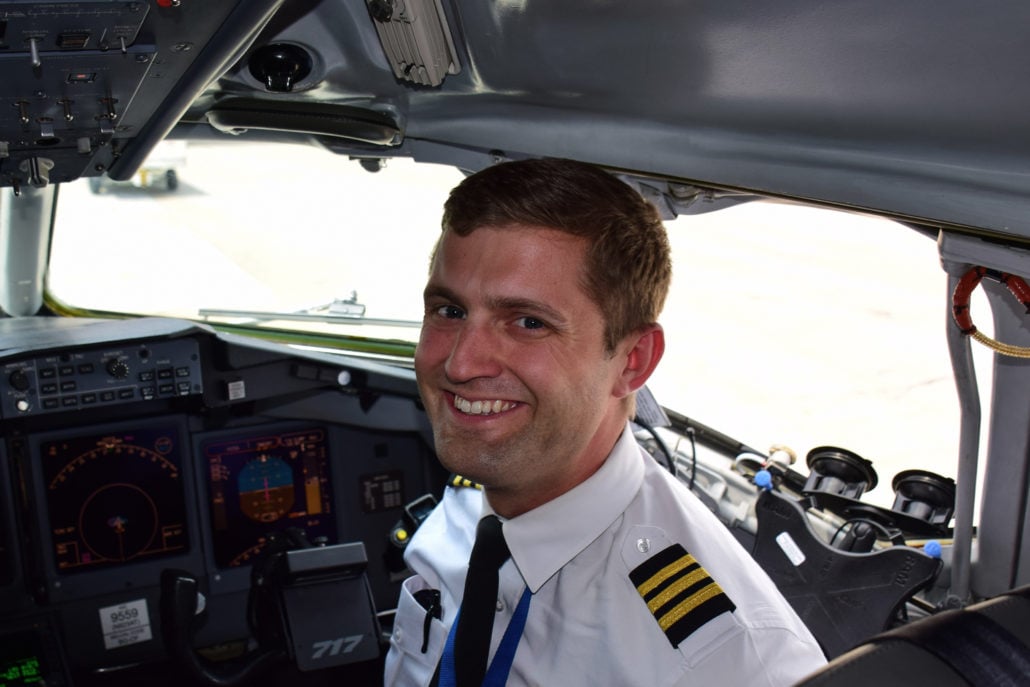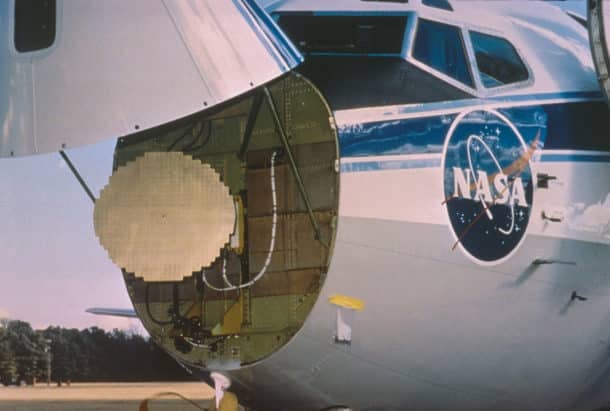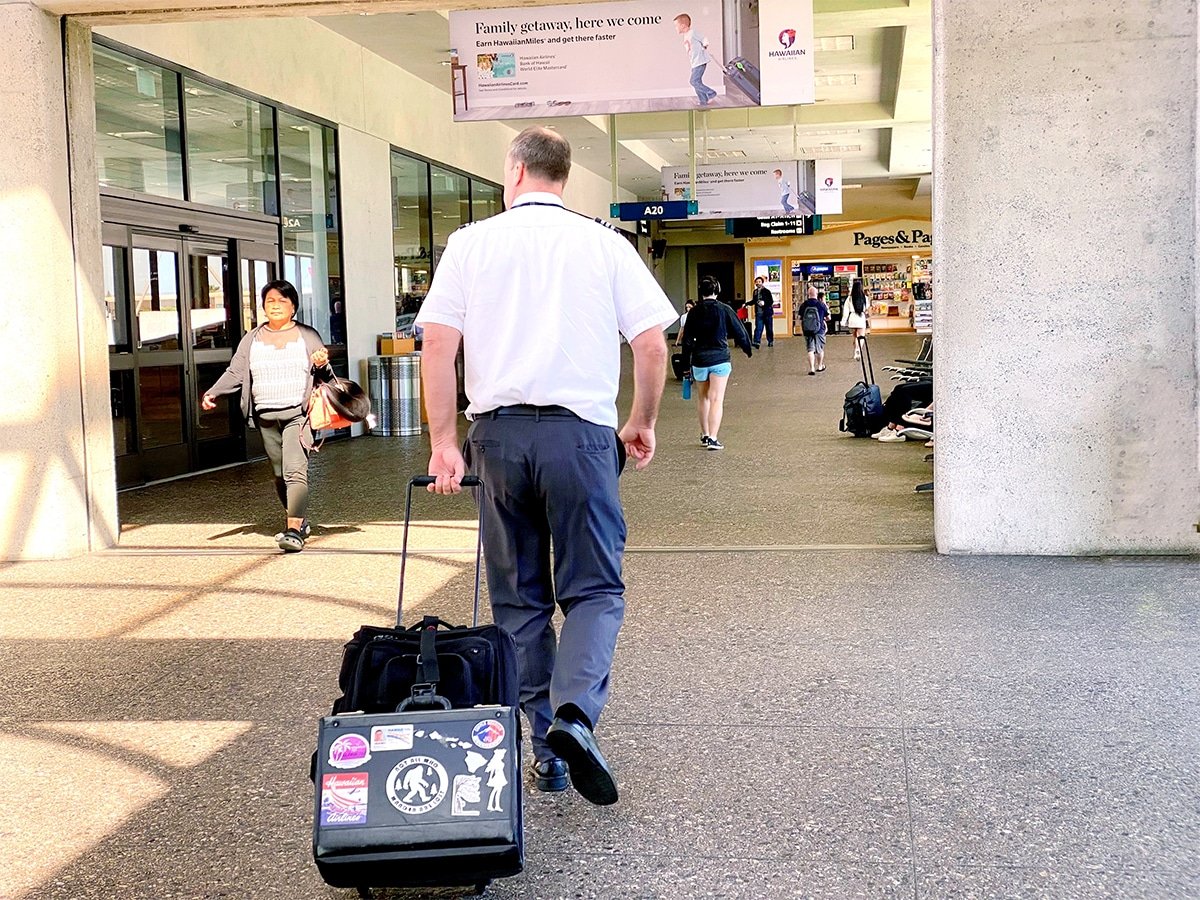
In our Ask a Pilot series, pilot Spencer Marker answers one of your aviation-related questions each week. See past installments here and submit your own to Whitney@johnnyjet.com.
The question
Does flying an airplane in the springtime present any unique challenges?
—Jim M.
The answer
Hey, Jim. Thanks for writing in for this week’s Ask a Pilot. As frigid wintry weather eventually gives ways to the warmer days of spring, the environmental challenges a pilot faces change, as well. Where we were once confronted with snow and ice, pilots in the spring find themselves and their jets traversing sometimes stormy weather as the seasons change.
But as the weather changes, pilots employ a number of tools in the flight deck and on the ground to ensure areas with bad weather are avoided. This way, we can provide our passengers with a safe and comfortable flight.
Stormy weather
As that old saying goes, “April showers bring May flowers.” While that can be true, sometimes those April showers present themselves as fairly intense thunderstorms. As pilots and passengers alike know, these storms can bring turbulent air, strong winds and delays.
As pilots, our job description isn’t limited to just the physical manipulation of the flight controls and autopilot. Rather, we must be practical meteorologists as well. This helps us anticipate what the weather will do as we are flying along our route. And as a group, pilots know that spring weather can be conducive to the development of strong storms.
This is because of an increase in surface heating. During the summer, daylight hours are longer, resulting in a longer amount of time for the sun to heat the Earth’s surface. Secondly, the sun rises higher in the sky during the spring and summer, allowing more solar radiation to reach the ground, also resulting in more heating. When different areas on the surface are heated unequally, atmospheric instability occurs.
When you add this solar heating, instability and moist air together, large pockets of air will begin to rise vertically. When this warm, moist air rises, it condenses and creates clouds. With very unstable air, these clouds will grow and grow until a thunderstorm is ultimately created.
(For a more in-depth discussion of the genesis of a thunderstorm, click here.)
So what tools do pilots have?
As I’ve stated earlier, pilots have a myriad of tools at their disposal when it comes to the detection, identification and avoidance of areas with thunderstorms.
Avoidance of potential thunderstorms begins hours before a flight even departs. Every airline has a meteorology department within its headquarters that tracks and forecasts potential areas of severe weather. These specialists work hand in hand with company dispatchers (people that plan flights for pilots and monitor the flights’ progress) to determine the best route and altitude an airplane should take to avoid thunderstorms. So specialists are working behind the scenes well before the crew arrives at the airplane.
Once the flight is underway, pilots still have means for determining the best course of action to take when confronted with unexpected weather along the route.

The most readily available to the pilot is the onboard weather radar. This vital piece of airborne equipment resides in the fiberglass nose cone on the front of the airplane. It utilizes a dish, sometimes less than 12 inches in diameter, scanning back and forth to detect and determine the intensity of rain as the aircraft flies. It does this by emitting a radio signal into the storm. The rain in the storm will reflect some of those radio waves back into the receiver. The more waves reflected back, the more intense the storm. These returns are then displayed to the pilots on either a standalone screen or one of their flight displays.
Additionally, pilots can contact their dispatcher. Working with the in-house meteorologist and looking at the latest National Weather Service Radar graphics, dispatchers can recommend a course of action to the pilot. Also, Air Traffic Control has ground radar as well and can assist pilots in locating and avoiding areas of stormy weather.
Finally, with the advent of modern onboard Wi-Fi, pilots at some airlines have access to a number of meteorological websites. The use of this feature is limited to above 10,000 feet and is restricted to required sites only. More recently, a few airlines have also started installing their own proprietary meteorology apps on their crew members’ company issued tablets. This way, pilots have all the information they need right at their fingertips.
To sum up
Thanks so much for writing in, Jim. Springtime is my favorite season. I love the return of warm weather, the budding of trees and the resurgence of the color green!
However, weather patterns of the season can produce a number of unique challenges to pilots like me. That said, aviation professionals have a multitude of tools at their disposal and people working behind the scenes to make sure every passenger has a safe and smooth flight. Plus, what could be better than taking in the springtime revival from the air?
Thanks again for your question! If you have a story about flying in the spring, post it to the comments below! If you have any APU-related comments, feel free to post below. And if anyone have a burning aviation question or something you would like cleared up, drop us a line at Whitney@johnnyjet.com to get your question featured in an upcoming Ask a Pilot column.
Tailwinds,
—Spencer







